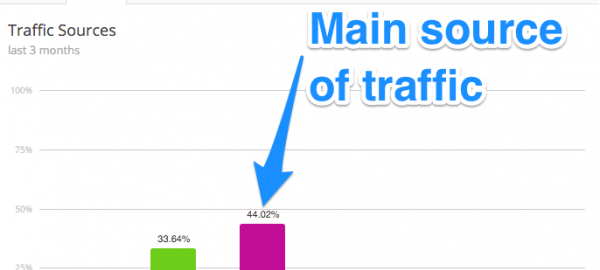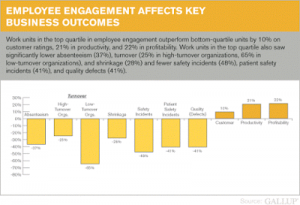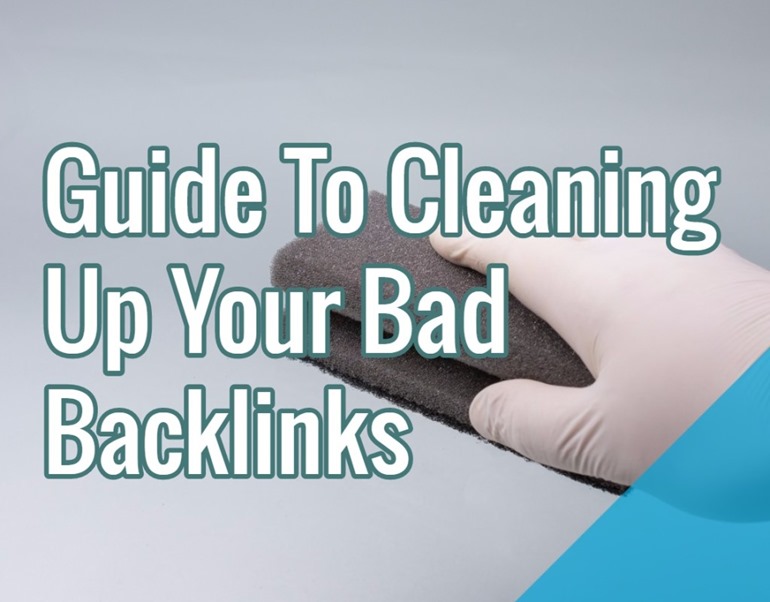
Low-quality backlinks will hold your website from growing and if you have too many of them, you might even get a penalty. If you are trying to improve your site’s SEO and you do not see any results, chances are you have too many bad backlinks. To put your site back on track and get more organic traffic, you’ll have to get rid of all the low-quality links that are influencing your rankings in a negative way.
In this post, Ill go beyond the regular SEO optimisation tips you’ve already read and show you how to clean up your backlinks profile.
If you’ve made a mistake and hired a shady SEO company or someone has built some bad links to your site, here’s the solution to get rid of all the nasty links.
What Is A Low-Quality Backlink For SEO
First you have to understand what makes a link bad for SEO and how you can quickly determine the quality of any backlink. There’s a common misconception that all backlinks are good and will improve your SEO. That’s entirely wrong.
These are some examples of bad links you shouldn’t have:
- Backlinks from sites that are penalised by Google.
- Backlinks from unrelated sites. Relevancy is imperative for SEO.
- Backlinks from sites with thin and auto-generated content.
- Backlinks that are automatically created.
- Link exchanges.
- Dofollow purchased links.
- Links from sites that have duplicate content problems.
- Avoid having too many links with over optimised anchor texts.
- Links from blog networks.
- Backlinks from link schemes.
There are so many types of links that can be bad for your sites SEO. Because numerous SEO companies continue to build low-quality links, you should always keep an eye on your links profile; don’t trust your link profile entirely.
How To Determine If A Backlink Is Good Or Bad
Gauging if a link will help with SEO or not can be done by analysing the quality of the website that links to you.
Luckily, there are numerous SEO tools and plugins available, and all of them make our life a little easier.
Here are the steps you have to follow to determine the quality of a link.
1. Check if the website is ranking for its brand name
You can run a simple search on Google for the brand name of the website you are trying to analyse. If its ranking in the first position, you can move on to the next analysing steps. Here’s a screenshot of an example of a site that’s first for its name in Google.

Now Here’s an example of a website (resourcesworkforce.com) that doesn’t rank at all for its name.

The site is nowhere to be found on the first pages, meaning Google thinks they are not reputable enough to rank for their name. You should avoid having links from such sites.
2. Check how much traffic the site gets from search engines
After passing the first step, you’ll have to see the percentage of traffic the website is getting from search engines. It’s a quick proxy to determine if Google penalised or filtered the site or not.
The best way to check a sites traffic is with the SimilarWeb extension for Chrome.
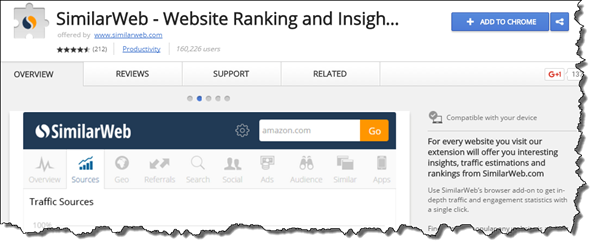
We’ll use the same sites as above to highlight the differences.
For Yoast, the organic visits are at approximately 44% and its the primary source of traffic.
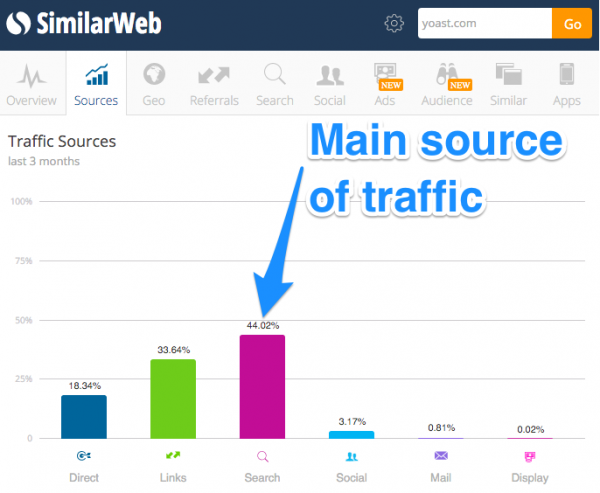
For the other site that’s not ranking for its name, results are significantly different. Traffic is much lower, of course, but the amount that organic search contributes is very low.
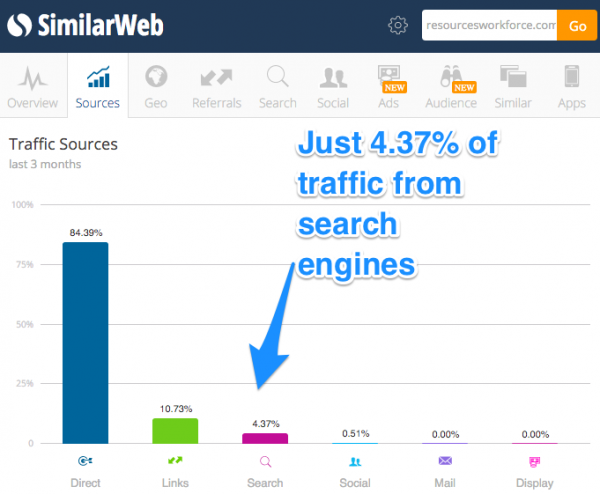
3. Use common sense to determine if the website is trustworthy and relevant
Now that the site you are trying to analyse has passed the first two tests, you’ll have to review the link manually and decide if its right or not.
If the site is relevant to your industry and it provides value to readers, you might have found a robust link.
4. Use metrics to help you understand the quality of your links
Most well known SEO tools have created metrics to help users understand the quality of a site and their backlinks.
You can use them to determine how good a website is, but don’t rely on them 100%. I’ll show you more about using metrics in the next part of this article.
Don’t be obsessed with PageRank. The public data wasn’t updated for more than two year when Google finally killed off toolbar (public) PageRank.
Moz and Majestic now offer much more accurate metrics.
How To Find Your Bad Backlinks
Any site is vulnerable to earning bad links. Even sites like the Huffington Post or The New York Times have plenty of low-quality backlinks. The difference is that they have enough quality and reputable links not to have their SEO affected. Unfortunately, not everyone is that lucky, meaning that from time to time its best to clean up your backlinks profile and remove all your bad links.
To keep track of your backlinks and analyse their value, I use the Monitor Backlinks tool. [1] It shows more than 15 different metrics that you can use to compare the quality of your links like a professional. Other tools you can use include Moz’s Open Site Explorer or Majestic where you can easily see which links are new (or which were lost) in a given timeframe.
When you add your domain, you’ll see all your links, as in the screenshot below.
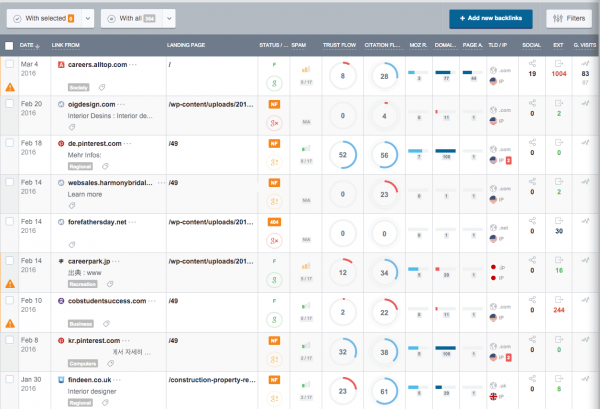
For the backlinks that have controversial metrics, you’ll see a warning sign that indicates it’s recommended to review the link manually. When you hold your mouse over the warning, you’ll understand why the link was highlighted to be bad. Here’s an example.
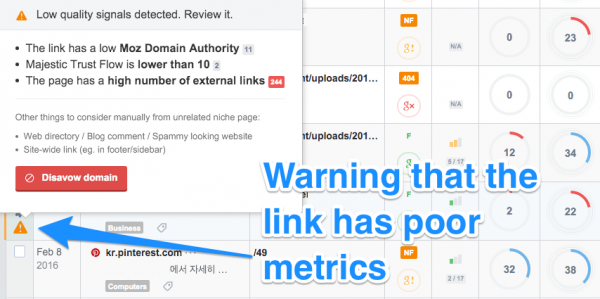
In the case above, the link is considered bad because it has a poor Domain Authority, the Trust Flow is very small and it has a high number of external links. It’s wise that such links are reviewed manually: use the steps described above to do so.
Note that not all links that have inferior metrics are bad, so its not necessarily to remove or disavow all of them.
If you’ve decided the backlink is not worth keeping, you can click on the button Disavow domain, and add it to your disavow list. Otherwise, you can just ignore it.
To perform an in-depth backlinks analysis, you can use the filters located on the right side of the table. To find bad links, you can sort them by applying multiple filters at once. These are the ones I recommend:
- Click on Status and select to see only the followed links. Monitor Backlinks will only show the dofollow links, the ones influencing your rankings in Google.
- Choose to see the links with a Domain Authority lower than 20. In case your site has more than 300 total links, you can select to see the sites with a Domain Authority lower than 10.
- Select the links with a Trust Flow lower than 20.
You’ll have to analyse the links that are filtered and decide if they are good for SEO or not. When you find a bad link, always add it to your disavow list.
To find the worst backlinks in less than one minute, you can filter them by their Google index status. In more than 95% of the cases, the links coming from domains not indexed in Google are most likely penalised. As I told you above, such links are the worst you can have and you must get rid of them as soon as possible.
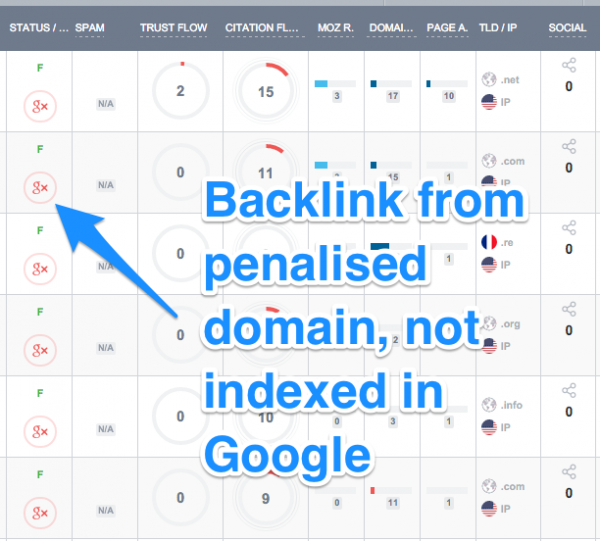
The red Google icon indicates that you are dealing with a site that’s not indexed by Google.
You also have the option to find links from blog networks or sites that using the same hosting IP. Such links will have a number on a red background, in the TLD/IP column. Below you can find an example that shows a backlink from a network of 21 other sites.

Google is against these type of links and interprets them as a way to manipulate search results. Therefore, you must disavow all your links from blog networks, especially if they are dofollow.
How To Get Rid Of Your Bad Links
Google recommends removing all the bad links and keep only the natural and relevant ones. To remove your links, you’ll have to send personalised emails to webmasters and ask them to remove the backlink to your site. It’s important to be polite, and never threaten them, or your chances of removing the link will diminish.
Don’t despair if your link removal campaigns only has a 10% successful rate. More than one year ago, Google has a Disavow Tool to help site owners tell what links they don’t want to be taken into consideration for SEO.
After analysing your links, and adding them to your disavow list from Monitor Backlinks, you can export them from the top menu Disavow. From there, click on Export and the tool will generate your ready-to-submit disavow report.
Select your site in the Google Disavow Tool and upload the report you exported from Monitor Backlinks.

It usually takes between 1-3 weeks for the report to be processed, but its the last resort against bad links, and you should use it wisely.
Conclusion
To be successful with SEO, never neglect your sites backlinks. They are the major factor for Google to determine where your site should rank, and too many bad links can have a negative impact on your performance.
Identify your bad links as soon as you get them and try to remove them. Use the Google Disavow tool and tell Google what links you want to be ignored.
Hand-Picked Related Articles:
- How To Do A Link Audit For Your Own Company
- Google’s Manual Actions Guide (& How To Fix Them)
- ‘Un-link’ Building: How To Successfully Remove Penguin Links
* Adapted lead image: ![]() Public Domain, pixabay.com via getstencil.com
Public Domain, pixabay.com via getstencil.com
Guide To Cleaning Up Your Bad Backlinks
The post Guide To Cleaning Up Your Bad Backlinks appeared first on Search Engine People Blog.
(87)
